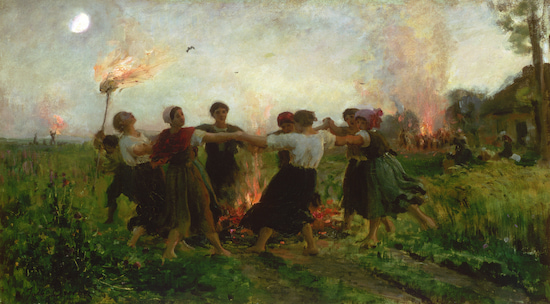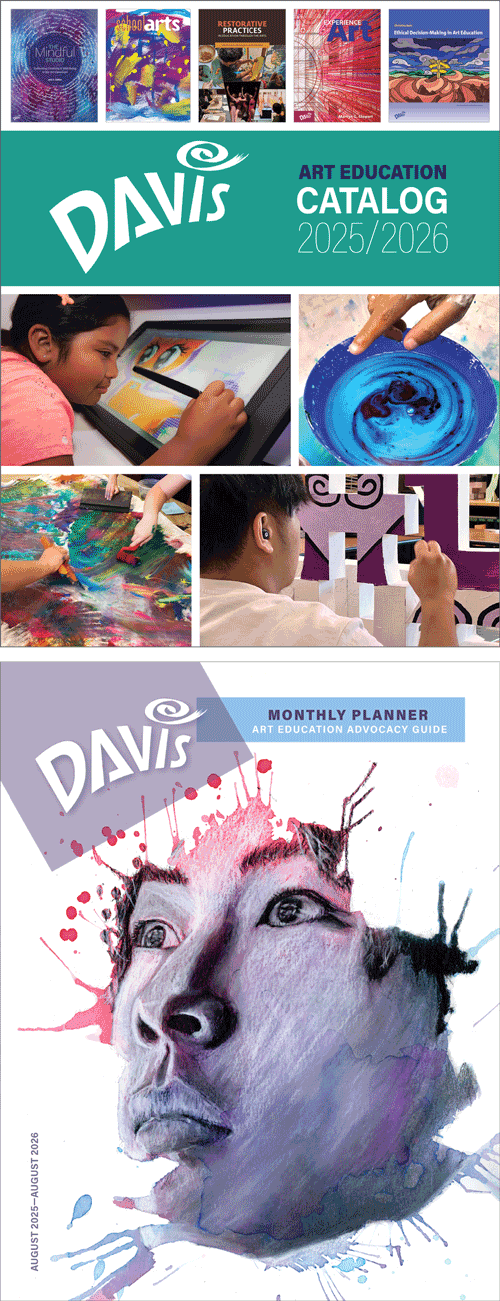Artist Birthday: Jules Breton
Jules Breton was a unique artist of the Realism movement in France in the mid-1800s. Having grown up with poor rural farmers in northern France, he understood their lives and labors. His paintings present their lives with great empathy, in an Academic style that did involve some idealism.
Artist birthday for 1 May: Jules Breton (1827–1906, France)
Jules Breton was an artist trained in the academic tradition but preferring subject matter of the rural poor rather than history subjects.
 |
| Jules Breton, Fête Saint-Jean, 1878. Oil on canvas, 34.3 x 61.3 cm. © 2025 Philadelphia Museum of Art. (PMA-2486) |
Breton always aspired to a "grand style", which in the end became archetypal depictions of the rural poor, evolved from academic tradition, and infused with the empathetic principles of the Realism movement. Such subjects as the yearly Fête Saint-Jean Breton presents with the Romantic, atmospheric lighting that characterized all his works, while it contains the broken color, fluid brush work, and non-Academic palette that suggests the influence of then-nascent Impressionism. While Breton was not an Impressionist, he was fascinated with the Impressionist artists' study of light effects on a composition. In later works such as this, the star subject of the composition is the early evening light and bonfires, which cast fascinating illumination not only on the figures of the farmers, but also on the surrounding crops. In his late paintings Breton loosened up the sharp-focused, idealized representation of the poor farm folk, and tended towards more painterly rendering.
The Fête de Saint-Jean began during the Middle Ages (ca. 1000–1200) to celebrate the birth of John the Baptist, but eventually came to celebrate the summer solstice around the 24th of June every year. It begins in the early evening and as darkness falls, it is common to see the lighting of bonfires (known as le feu de la Saint-Jean) and fireworks. The bonfires supposedly represent a variety of things, with various people claiming that the fire is used to burn the demons away in order to bring good luck. Others will say that the bonfires are there to represent the light that summer solstice brings. A festive atmosphere is generated during the night with singing, dancing and other similar celebrations often taking place, which continue until the early hours of the morning.
By the mid-1800s, the Academy in Paris had become not only the leading art academy and arbiter of taste in Europe, but, also dictatorial in its judgment of artistic subject matter and styles and what was "acceptable." This attitude tended to prevail in most national art academies in Europe and even America. History, mythological and religious subjects were considered of the highest status. Aside from that, Romanticism had taken such subject matter to heights of drama and esoteric thought that were foreign to the increasingly growing and prosperous middle class. The term avant-garde (literally vanguard, or, cutting edge) was first used to describe artists in the forefront of new developments in art, seeking to enlighten through their art a public other than aristocrats and rich people.
The downfall of the elitist, corrupt monarchy of Louis Philippe de Bourbon (reigned 1830–1848) was a middle-class revolution that not only overthrew a corrupt ruling class, but heralded a new attitude towards subject matter. The Grand Manner and Romanticism were rejected in favor of a style that depicted everyday life without any dramatic or moralistic content like Romanticism. The movement called Realism lasted between 1850 and the 1870s. Although it did not demand strong emotion like Romanticism, the movement did shine a light on the deprivation of poor people.
Jules Breton was born in Courrières northern France near the Belgian border, to a prosperous middle-class family. He had a happy childhood playing with the children of local poor farmers, the foundation of his idyllic memories that would later be reflected in his paintings. He received a classical education at the College of Douai where he had his first opportunity to draw and paint. In 1843 he studied in the studio of the Belgian history painter Félix de Vigne (1806-1862) who had been impressed with his portraits and sketches after nature. Breton at that time became acquainted with Flemish Renaissance and Baroque masters and the incisive realism of their paintings.
In 1847, Breton went to Paris to complete his studies at the School of Fine Arts (École des Beaux-Arts). He abandoned those studies during the Revolution of 1848 to return to Courrières. Inspired by the egalitarian ideals of the Revolution, and feeling a kinship with the local farm folk he had interacted with since childhood, Breton began to paint subjects that called attention to the problems of the poor. Want and Despair was his first entry into the Paris Salon (1849).

Comments